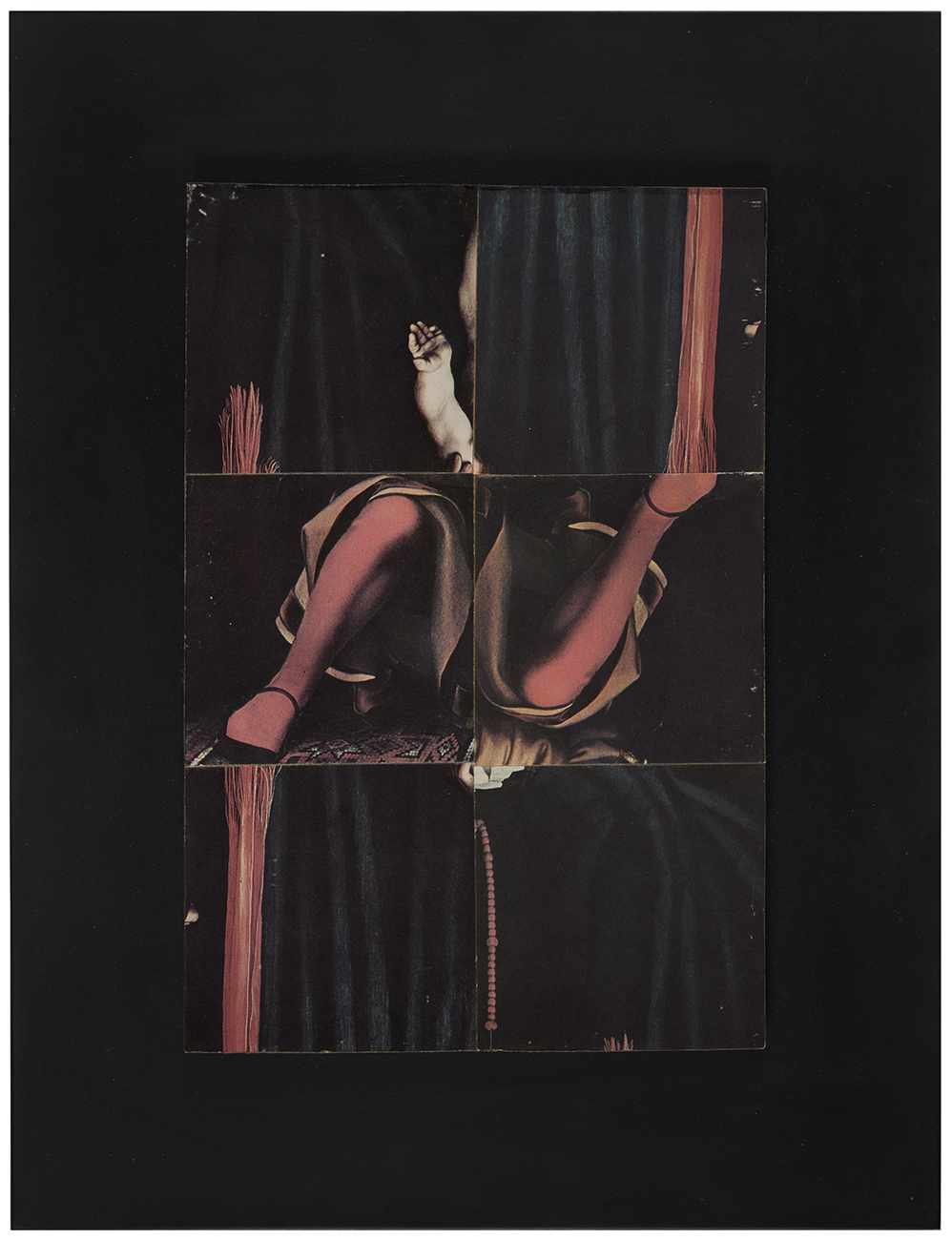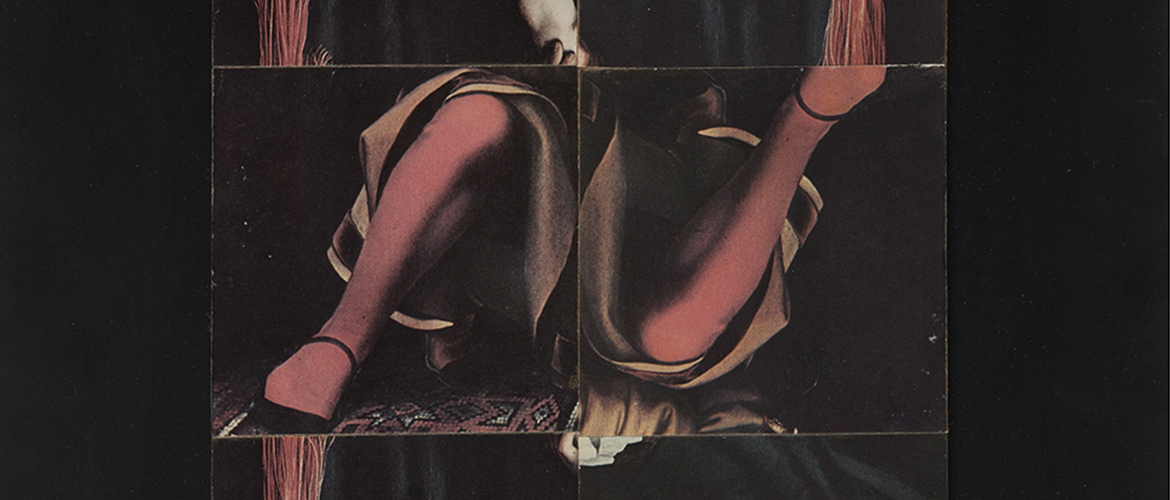Originally from Romania, from the early 1930s Gherasim Luca (1913–1994) formed close links within the French art world, notably among the Surrealists; he settled permanently in France in 1953. Described by Gilles Deleuze as the “greatest poet in the French language,” Luca cultivated “hero-limit” work, to use the title of one of his pieces (“héros-limite,” 1953), where the deconstruction of language is based on the rejection of political, identity, and ethical categories, and reliance—twenty-five years before Deleuze and Félix Guattari—on anti-Oedipal notions. His atypical path, with the creative process is inseparable from his personal life, naturally led him to transcribe his poetic experiments into the visual arts. In addition, particularly from 1945, Luca embarked on a series of collages made from various photos of illustrations, and more significantly, reproductions of paintings, cut into squares of equal dimensions. He glued these squares side by side to form new, original, and surprising images, following a process very much inspired by the Surrealists. He called these works “cubomania,” to invoke the square’s foundational role, but possibly also as a way to mock the heirs of Cubism.
Beyond the Surrealists’ influence and that of the scandalous L.H.O.O.Q by Marcel Duchamp (1919, Musée National d’Art Moderne, Paris), Luca’s “cubomanias” of Luca staged a personal dialogue with celebrated works of art history, from Leonardo da Vinci to the Van Eyck brothers, Caravaggio to Ingres. In this work, Gherasim Luca’s point of departure is one of the best-known paintings by Hans Holbein, the Darmstadt Madonna (1527), also known as Madonna of the Lord Mayor Jacob Meyer zum Hasen, now held privately and shown in Schwäbisch Hall, but which at the time was on display in the Schlossmuseum Darmstadt. In this work Luca made particularly masterful use of the reproduction and the cropping techniques that make his cubomanias so original, using the leg of the patron’s son twice with different cut-outs, as well as the Virgin’s red belt three times. Recomposed in this way, right-side up or upside down, these figurative details take on a profoundly abstract character, reinforced by the opposition between black and red, in addition to the new continuities that Luca proposes through the association of elements that are identical in size and color. Additionally, the forms extend into the black of the support, suggesting the unfinished nature of the work, to be continued in the viewer’s imagination. Investigations into Luca’s “cubomanias” has particular resonance with the work of Holbein, who is famous for harnessing the dreamlike power of deformation by placing an anamorphosis in the center of is most famous work, The Ambassadors (1533, National Gallery, London).

Cubomania entitled “Madone du Bourgmestre Meyer (d’après Holbein) ”, 1983 Collage of photos on board, mounted on a wood panel, 34,5 x 26 cm © Beaux-Arts de Paris



